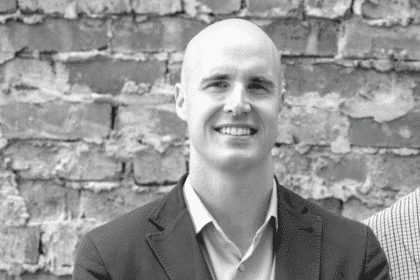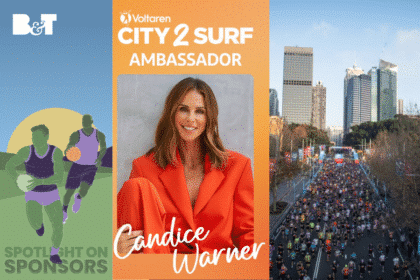Everyone knows how important sound is in advertising. The right song can set the mood for a product and communicate the notion of a brand or a product in a way that words simply cannot.
“Agency creatives tend to have a broader knowledge and greater understanding of the power of music, but it’s usually applied in the context of an ad or a campaign,” explained Ralph van Dijk.
van Dijk co-founded Resonance Sonic Branding with Ramesh Sathiah and, while the company has just had its second birthday, van Dijk is convinced that there are even greater opportunities ahead for Resonance and the idea of sonic branding, as a whole.
“The assets we’re creating are designed to be implemented at every touch point along the customer journey and for the life of the brand — so they’ll survive if the agency changes, CMO changes, CEO changes,” said van Dijk.
“It’s a much longer term consideration for us, as opposed to something that’s right for a campaign. I think in the past, because it’s been tacked on to campaigns, it was very tempting to rush the execution.”
While brands and agencies might have previously rushed to finish the audio aspects of their campaigns and head down the pub, van Dijk explained that as media becomes more fragmented, it is essential for brands to ensure consistency across their communications.
“At the moment you’ve got brands existing in completely different ways across different platforms,” he explained.
“The fragmentation of the different media platforms means that it’s essential [to have a unified sound] and it helps attribution so much and adds brand impact. The other thing is that most of this new media, has sound as an integral part of it. Look at TikTok, if your brand has its own asset, then you should be using it on TikTok. If your brand doesn’t have its own audio asset and you’re using TikTok, then you’re missing a trick. You could be cementing this particular phrase or melody into the minds of all those TikTok users.”
In the same way that a sound can go viral on TikTok, van Dijk said that strong sonic branding can have that instant recall effect.

“It’s the same way as a track that they’ve never heard can suddenly become embedded, because there’s momentum and everyone’s running up that hill and singing Kate Bush songs.”
Sonic branding goes further than just social media platform and TV spots.
“There isn’t just traditional media, but voice-controlled products, conversational commerce, self-service menus, voice-controlled light switches, all those products and all that technology has the ability to embed and a piece of audio in it. Our kids are getting used to talking to every device and expecting it to be able to listen. So if it can listen, then maybe it could also talk back, or play something back, or just remind you of who has brought you this technology or who has brought you this search result.”
Strong sonic branding, however, isn’t just a good piece of licensed music or a catchy mnemonic.
“A three-second audio logo, or a soundtrack, or a brand voice is flexible enough to be able to be tailored for that platform, but consistent enough for it to be unmistakably recognisable as that brand,” van Dijk told us.
“Something else we’ve learned is that if we’re asked to do it quickly, it’s not that we can’t come up with the solution fast, it’s that we haven’t been able to define the problem fast enough.”
Defining that problem is a process — and an in-depth one at that.
“It always starts with an audit, like an audit into the brand itself, where it is existing in sound, where sound is applied on the customer journey, how they’ve used it in their advertising, how they use it on hold, in store, online, in app,” he explained.
From there, Resonance works with its clients to understand the competitor landscape and mood boards different sounds with different genres to understand which elements of the brand personality it can amplify.
“Once we tap into that feeling, this is the feeling that the music can support every time a customer is exposed to your brand. They can feel this about you even if the top line messages are ‘available for a limited time, get in now, coupon,’ and other hardcore call-to-action messages. We can infuse that message with an emotion that’s sort of happening and that’s why it’s really good for short form advertising because you can have this layer of emotion even though you know the voiceover may only be talking about rational information.”
Capturing the feeling of a brand allows it to be communicated wherever and wherever it might be needed.
“Brands such as Kathmandu have incorporated birdsong and this sort of nature and outdoors-y feeling. They’ve got woody sounding percussion that just makes you think of things outside — it’s just really well done,” van Dijk said.
From Resonance’s own work, van Dijk cites the Australian Open and Canva as leading examples.
“The Australian Open reflects that unique Aussie spirit with that call-and-response, it’s a chant to get and you’re getting the audience to participate in a really great Aussie way.”
With Canva, it uses a choir that “reinforces that ‘design for all’ mantra,” he explained.
However, it’s the adaption of this sound for different where Resonance’s sonic branding comes to the fore. For the Australian Open, this sound was mixed into a longer piece used for a light show at the opening ceremony.
In Canva’s case, the sound is used at every customer touchpoint.
“We wanted to reinforce the fact that their platform democratises design and makes design available for all,” van Dijk said.
“So we represented that in a choir, which is universally seen as a coming together and a collegiate expression of togetherness in celebration. That feeling you get once you have designed anything on Canva, there’s kind of an elevated, joyful feeling, a dopamine rush and our audio logo has been used in the app now and that is cueing to the celebration of that moment where you publish something.”
With brands set to become increasingly prominent in consumers’ lives across an ever-increasing variety of media and technology, from talking to van Dijk, it seems that being able to communicate a brand’s place in the market and stance through sound is essential.
“I think brands and agencies are aware of sonic branding. I just don’t think they fully realised the power that it has and the ability to use music and voice to articulate the personality of a brand,” he said.
“Most brands or briefs that come to us, the client comes to us with an idea of what they think our solution is going to be applied to — above-the-line TV ads, some radio ads, and a little bit of online. After the first meeting, those touch points have quadrupled.”
Lead image credit: MFA.








